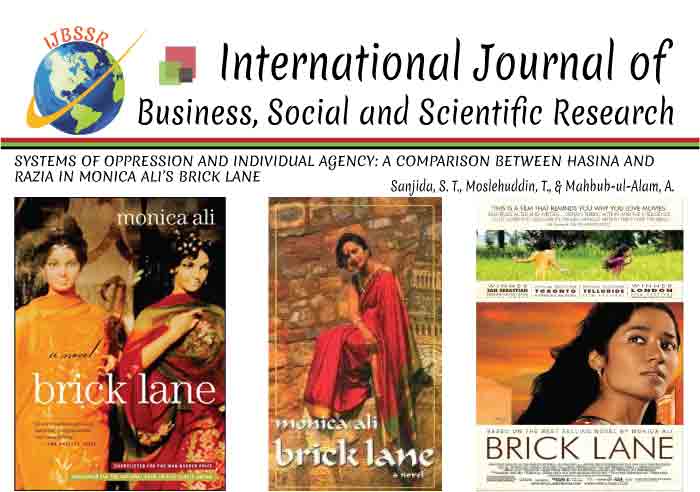SYSTEMS OF OPPRESSION AND INDIVIDUAL AGENCY: A COMPARISON BETWEEN HASINA AND RAZIA IN MONICA ALI’S BRICK LANE

DOI: http://doi.org/10.55706/ijbssr13206
URL: http://www.ijbssr.com/10.55706/ijbssr13206
Monica Ali’s Brick Lane provides a vivid
description of women struggling with systemic oppression shaped by intersecting
factors like gender, class, race, and others. Although Nazneen, the novel’s
protagonist, has received a lot of critical attention, the narratives of Hasina
and Razia offer equally compelling insights into how they deal with systems of
oppression, including sexism, classism, and racism, and employ their agencies
within their respective structure to strive for freedom. This study
investigates the experiences of Hasina and Razia through the lens of
intersectional feminism. It also explores how each character’s choices and
actions reveal their attempts to overcome structural constraints and carve
their routes to freedom. By comparing their journeys, the study aims to reveal
multifaceted forms of resilience and resistance that women apply in
marginalised situations. Based on a multidisciplinary framework, integrating
Kimberley Crenshaw’s ‘Intersectional Feminism’ and Anthony Gidden’s
‘Structuration Theory,’ the study seeks to contribute to broader discussions on
the complexities of oppression and the role of agency in employment. It
emphasises how Ali’s characters navigate their identities and freedoms in
oppressive settings while opposing structural constraints.

